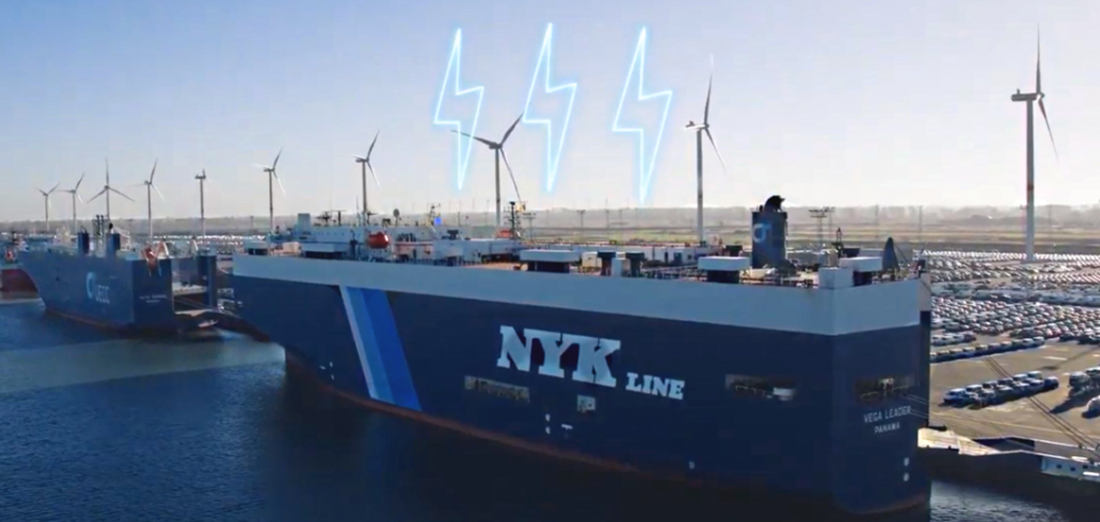
FT: Red Sea reroutings to further disrupt car supply chains, warn shipping executives
Jan, 24, 2024 Posted by Gabriel MalheirosWeek 202404
Carmakers, already struggling with supply chain problems, face further disruptions because of the Red Sea security problems as car-carrying vessels are undergoing reroutings, shipping executives have warned.
Lasse Kristoffersen, chief executive of Oslo-based Wallenius Wilhelmsen, and Georg Whist, CEO of Gram Car Carriers, were speaking after continued attacks in the Red Sea last week prompted two leading Japanese operators — NYK Line and K Line — to suspend sailings via the Suez Canal.
Their decision means that nearly all big car car-carrier operators have now switched their Asia to Europe services to the longer route round the Cape of Good Hope. The switch adds seven to 10 days to the normal voyage time of about four weeks between Shanghai and northern Europe, further reducing already squeezed capacity on the key trade route.
Distinctive, boxlike car carriers, which can ship thousands of vehicles, are vital in transporting cars manufactured in Japan, China and South Korea to the key European market.
According to Clarksons, the shipping services group, long-distance seaborne car shipments in 2023 were 17 per cent higher than the previous year, largely because of big increases in exports from China. This has come after large numbers of car carriers were scrapped during a market downturn in 2020.
Kristoffersen, whose company operates 128 car carriers, said the global 766-vessel fleet was “sold out” even before the diversions, meaning that all the available capacity was in use. That had already been acting as “a constraint” on vehicle movements even before the latest crisis — a problem that diversions to a longer route would only exacerbate.
The extra distance meant a further headache for carmakers as his company would be able to transport fewer vehicles annually than if they were using the Red Sea. That would further worsen the problems of a market struggling with undercapacity.
Whist, whose company owns 18 car carriers, said travelling via the Cape would cut the fleet’s effective capacity by 5 per cent to 6 per cent. Even before the diversions, he said, manufacturers had been resorting to unconventional means of moving vehicles such as putting them in shipping containers or transporting them in the holds of vessels designed for moving dry bulk commodities.
There is little immediate prospect that car carriers will return to their traditional Asia-to-Europe route via the Red Sea until the attacks subside. Kristoffersen rejected the idea of sailing through the danger area with a naval escort for protection, as French container line CMA CGM has done.
“The principle is that we will not go back [until] we believe there’s a safe transit and we do not think that, with the current threat in Yemen, that any military protection will be sufficient,” Kristoffersen said.
He contrasted the capabilities of the Houthis — who seized the car carrier Galaxy Leader in November by landing fighters from a helicopter — with the far more primitive threat previously posed by Somali pirates.
“This is a military capability, obviously with very good intelligence, with military means, missiles,” Kristoffersen said of the Houthis. “They’re really hard to protect against.”
Operators have 185 new vessels on order with shipyards, according to Clarksons. But deliveries this year are expected to increase fleet capacity by only a comparatively modest 7 per cent.
Stephen Gordon, Clarksons’ managing director for research, said normally about 25 per cent of global, long-distance seaborne movements of cars went through the Suez Canal. His company estimated that of all shipping segments only container shipping was suffering bigger upheaval as a result of the problems in the Red Sea.
However, the challenges for car-carrier operators are fundamentally different from those for container lines because there was a global excess of container ships before the latest crisis. Container lines have been able to reactivate idle ships to meet the extra demand created by longer journeys.
Whist said car companies had built up some extra inventory in their key markets over the past year. He expected them to run stocks down as new vehicle deliveries from Asia were cut.
“I expect it will be a combination of less service because of the longer distances but also some working into inventory to meet customer demand,” Whist said of the likely effects for carmakers.
Source: Financial Times
To read the original news text, please refer to: https://www.ft.com/content/97dd4654-995f-4bfa-aa45-2f6f4736cdef
-
Ports and Terminals
Aug, 16, 2022
0
Imbituba sees 2nd best monthly throughput for July: 700K tonnes
-
Trade Regulations
Sep, 03, 2019
0
China charges WTO against US tariffs
-
Ports and Terminals
Dec, 15, 2023
0
Record-Breaking Electric Vehicle Imports Boost Vila Velha’s Port Activities
-
Meat
Dec, 11, 2018
0
Brazil set to export a record amount of beef in 2019


